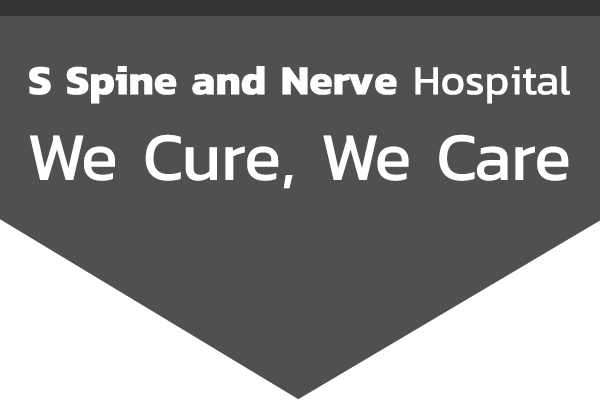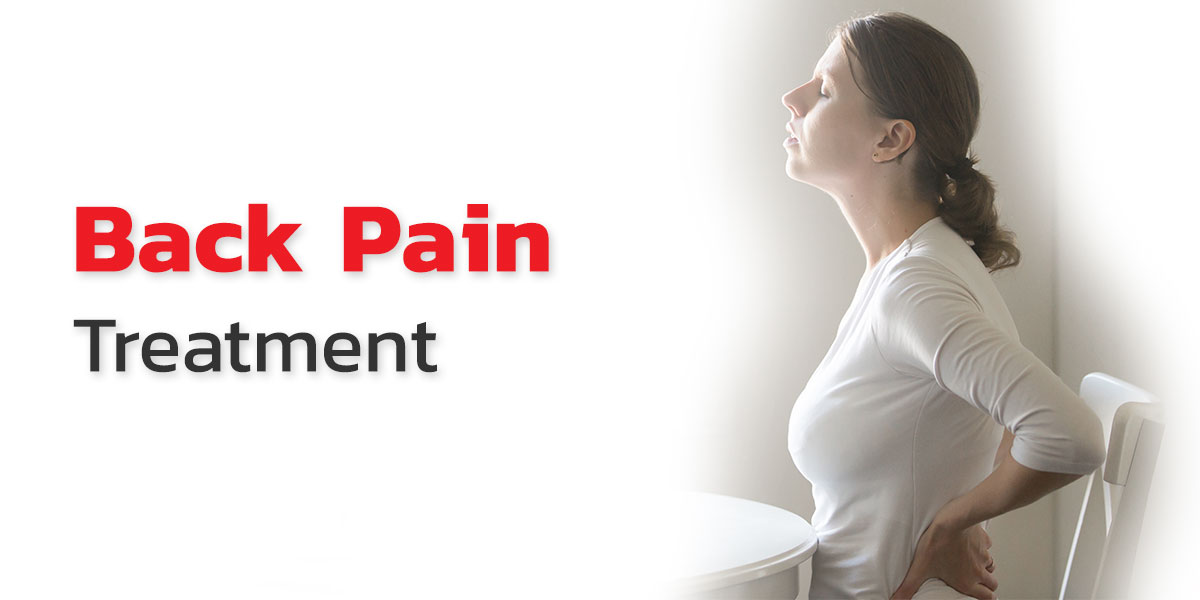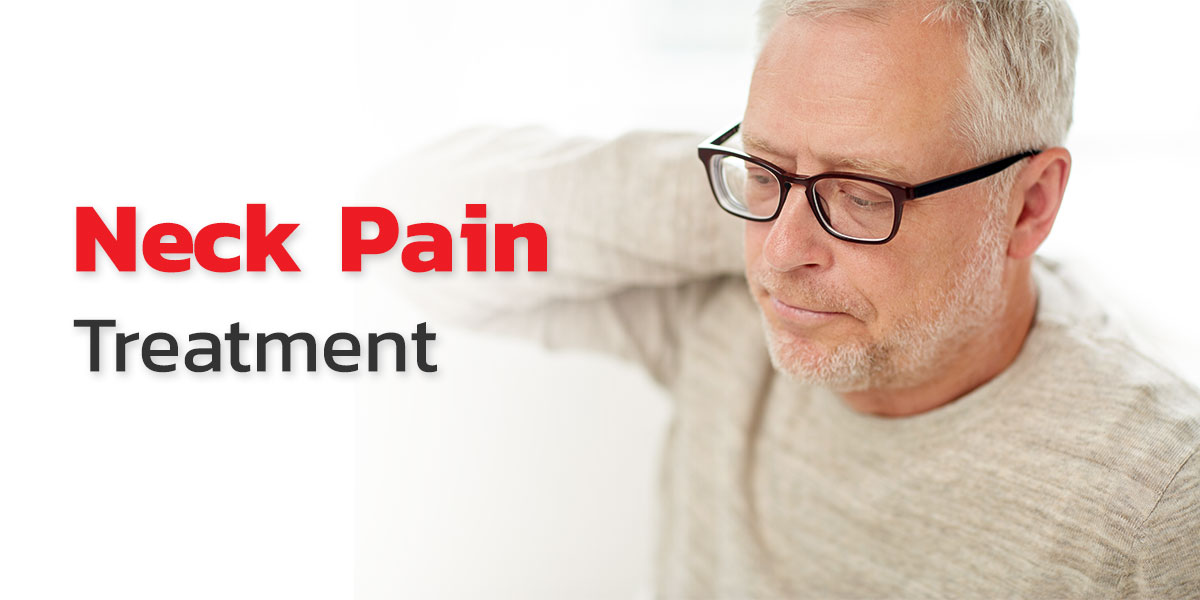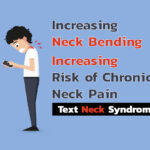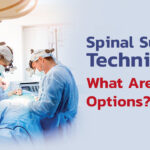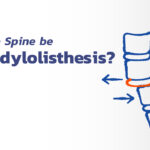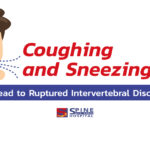Increasing Neck Bending, Increasing Risk of Chronic Neck Pain (Text Neck Syndrome)
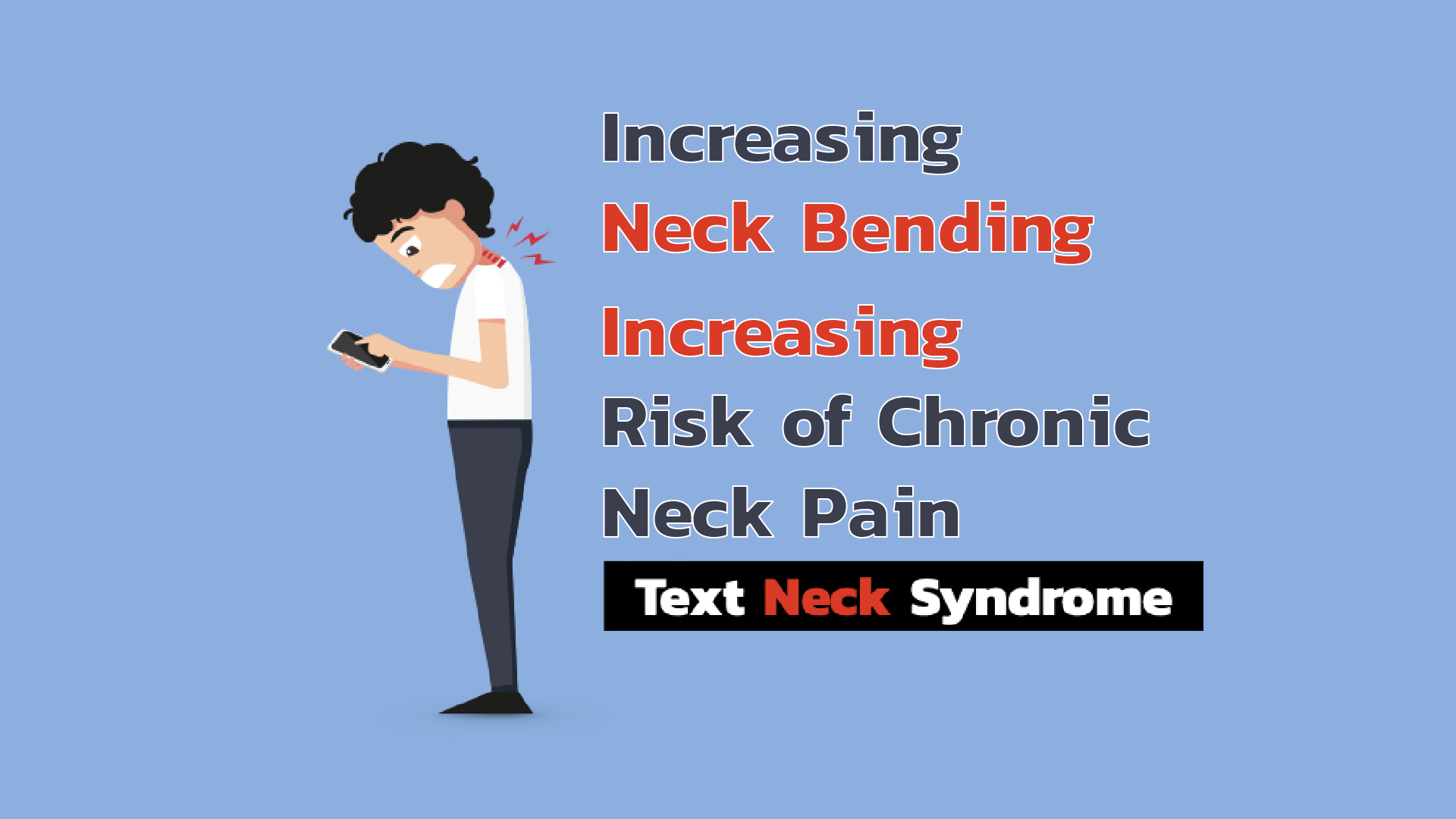
In the wake of COVID-19, global lifestyle shifts have led to increased reliance on smartphones for checking news, shopping, and conducting financial transactions online. This near-constant engagement has heightened the risk of developing various conditions associated with prolonged smartphone use, including Text Neck Syndrome or neck pain due to herniated cervical disks.
Smartphone Use Among Thais… How Addicted are We?
According to a digital report on Thailand from January 2020 by Hootsuite, a platform specializing in social media management, there are approximately 69.71 million Thais using 93.39 million mobile phone numbers (representing a 134 percent penetration rate based on registered SIM cards). Furthermore, 52 million individuals (75 percent) are internet users, and an equal number regularly engage with social media.
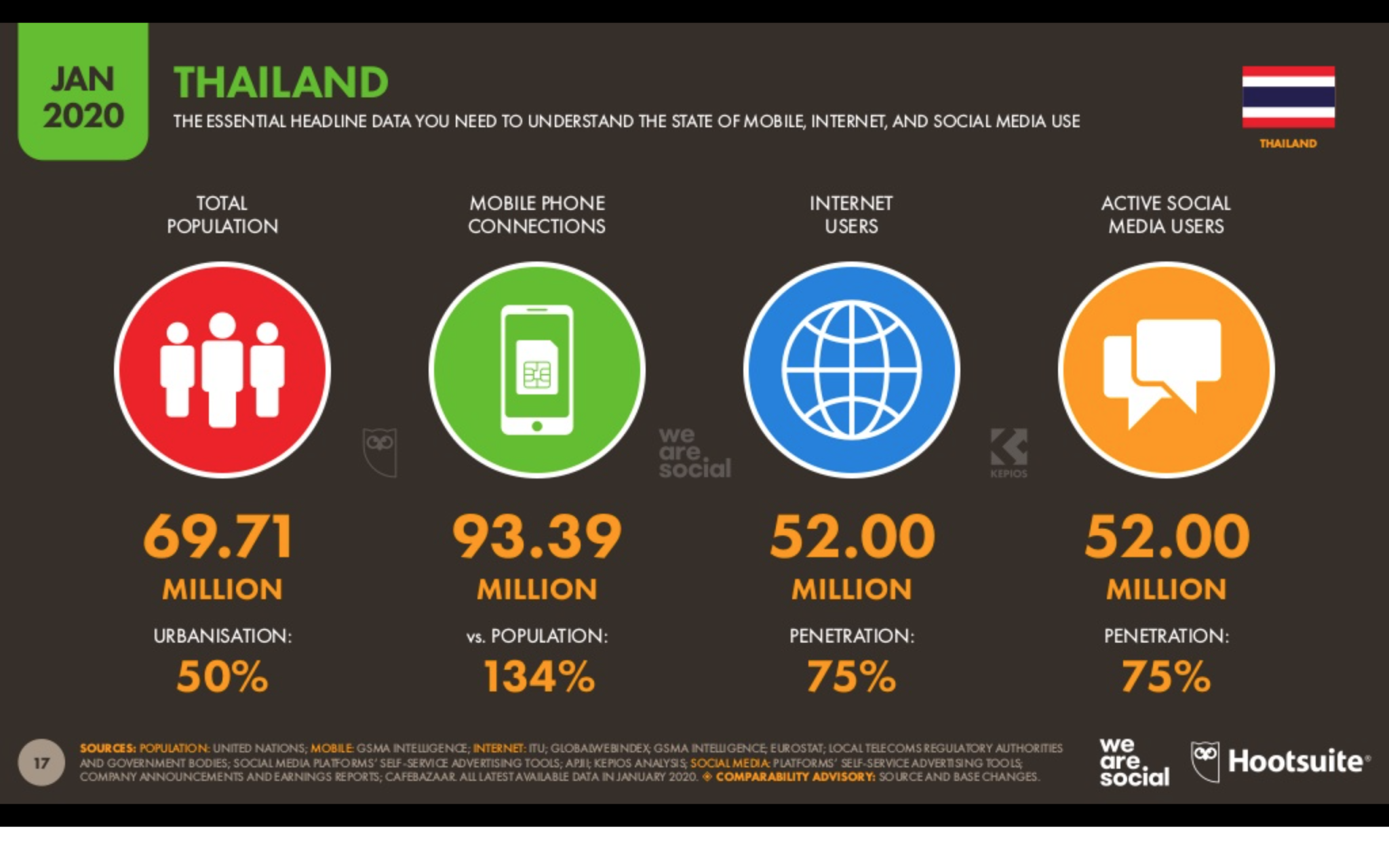
The statistics highlight a pervasive trend among the Thai population toward regular smartphone and social media use, with figures steadily climbing. This puts them squarely in the risk category for chronic neck pain, predisposing them to Text Neck Syndrome, a condition exacerbated by prolonged periods of looking down at device screens. This repetitive action can lead to significant discomfort, including neck pain that may extend down into the arms.

Risk Factors for Text Neck Syndrome
A study by the Surgical Technology International indicates that smartphone users subject their spines to the strain of bending forward for 1,000 to 1,400 hours annually.
The human head, weighing approximately 4–5 kilograms, shifts its position forward when one looks down at a smartphone. The degree of bending increases the weight the neck has to support, with every 15 degrees of tilt adding up to an additional weight of as much as 27 kilograms. This strain manifests as neck pain and, if left untreated, can lead to chronic neck pain. Some patients may experience neck pain that extends down the arm, numbness, or radiating pain from the neck to the hands, or even weakness in the arms and hands due to cervical nerve compression. These symptoms are primarily due to the increased weight borne by the herniated disk from prolonged head-down posture.
-Bending the head at 30 degrees, the neck bears up to 18 kilograms.
-Bending the head at 45 degrees, the neck bears up to 22 kilograms.
-Bending the head at 60 degrees, the neck bears up to 27 kilograms.
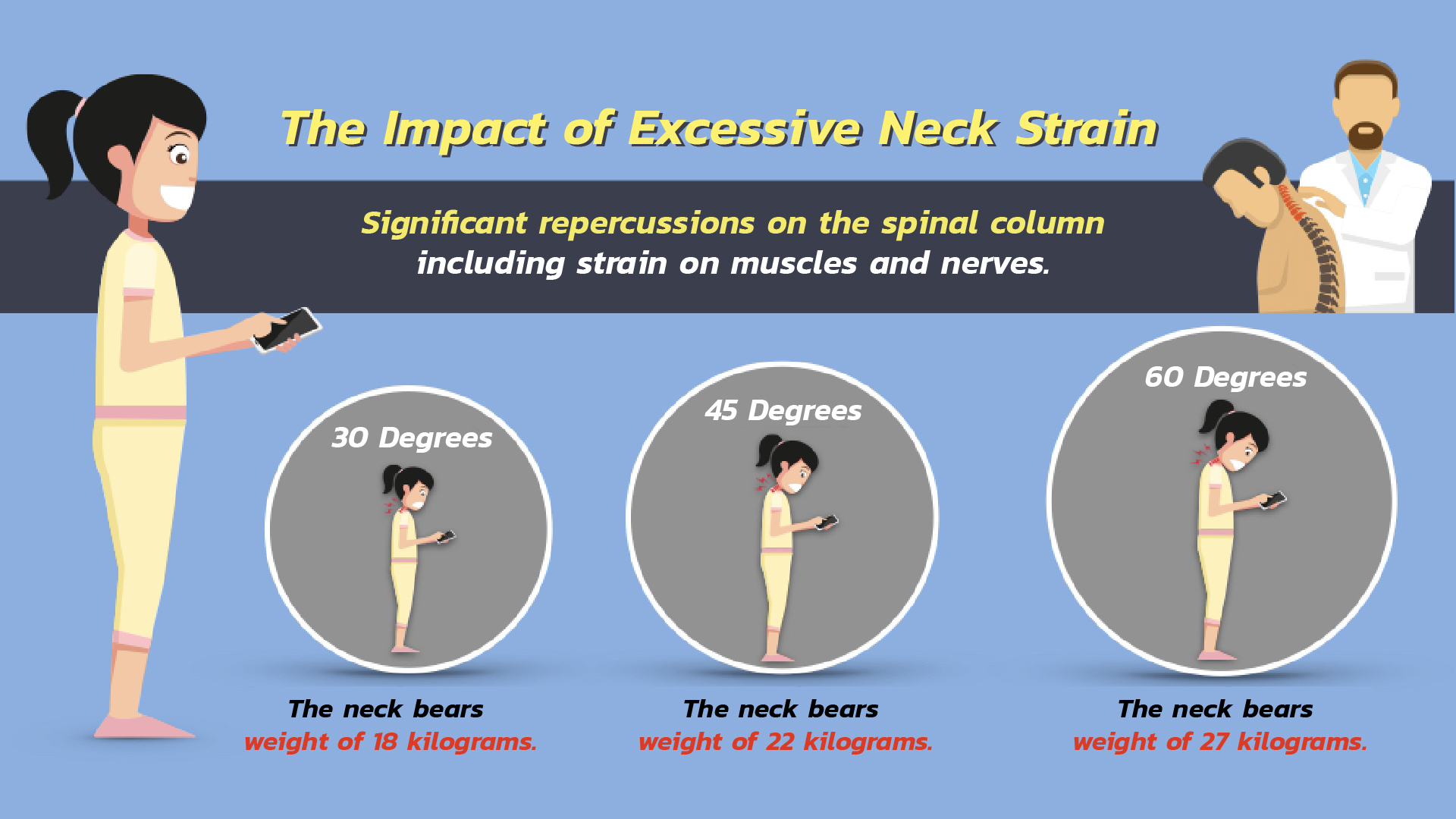
Preventing Chronic Neck Pain
Preventing cervical disk herniation or Text Neck Syndrome involves adjusting smartphone usage habits, including posture and usage duration. Maintaining as straight a neck posture as possible, avoiding hunching the back, and not rolling the shoulders while using a smartphone are crucial. Regular breaks to change posture, especially during prolonged use, are also recommended.
Treatment for Text Neck Syndrome includes three parts:
- Physical therapy for symptom management, including muscle relaxation, stretching, strengthening, and posture adjustment to ensure proper alignment.
- Medications to alleviate inflammation and muscle tension can also effectively reduce neck pain.
- In cases of severe symptoms leading to bone or cervical disk degeneration, accompanied by spinal cord or nerve root compression, endoscopic or laser surgery may need to be considered.
Currently, cervical spine issues can be addressed through MIS or laparoscopic surgery. This technique involves making a small incision to insert a camera and surgical tools, allowing surgeons to precisely view and operate on the targeted area. MIS is less painful, reduces recovery time, significantly lowers the risk of nerve damage, and enhances the safety and efficacy of the procedure, leading to a quicker patient recovery compared to traditional surgery.

If you’re a frequent user of smartphones and social media, you’re in the high-risk group for Text Neck Syndrome or herniated cervical disk disease. To avoid these issues, consider altering your habits to reduce screen time and maintain proper smartphone usage. Should you experience any related symptoms, it’s advisable to consult a specialist in spinal and nervous system health to ensure accurate diagnosis and treatment, ultimately achieving lasting relief from neck and back pain.


